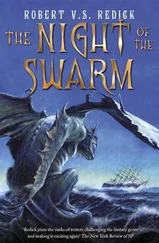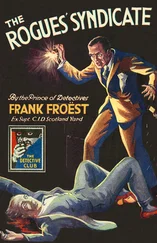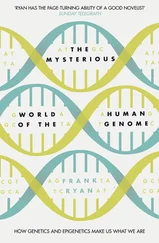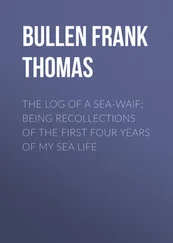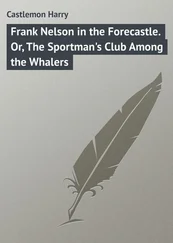In general, whales looked nothing like people, but at that moment the beluga seemed almost human. Briefly it seemed to smile. Indeed, unlike dolphins, the entire species could make their mouths smile or droop, even purse their lips, but it had nothing to do with their mood: the change in facial expression enabled them to vocalise.
At that moment, inspection complete, the beluga lost interest in the dot. Banking through the water in an elegant curve, it swam away from the wall.
'Well, that's that' said Anawak, softly.
'Which means what?' asked a female journalist, when the whale showed no sign of returning.
'It knows who it is. Come on, let's go upstairs.'
They emerged into the daylight, with the pool on their left. Swimming close to the rippled surface, the two belugas glided past. Anawak had deliberately refrained from explaining the experiment in advance. He was cautious about reading too much into a whale's behaviour, in case wishful thinking gained the upper hand, so he let the others share their conclusions first.
They confirmed his findings.
'Congratulations' he said. 'You've just witnessed an experiment that went down in the history of behavioural science as the "mark-test" or "mirror-test". Does everyone know what that means?'
The students did, but the journalists were less sure.
'Not to worry' said Anawak. 'We'll whiz through it now. The mark-test dates back to the seventies. Some of you may have heard of Gordon Gallup…' Half of his listeners nodded; the others shook their heads. 'He's a professor of psychology at the State University of New York. One day he hit on the crazy idea of exposing primates to their reflections. Most of them ignored the mirror, some assumed it was a rival and went on the attack, but the chimpanzees recognised themselves and used the mirror to look at themselves. Now, that was significant, since most animals can't identify their mirror image. Most animals feel, act and react – but they're not aware of themselves. They don't perceive themselves as independent individuals, distinct from other members of their species.'
Anawak went on to explain how Gallup had used a coloured dye to mark the foreheads of the apes before he exposed them to the mirror. The chimpanzees were quick to realise who they were looking at. They inspected the dye, raised their hands to touch it, then sniffed at their fingers. Gallup carried out the same experiment with parrots, elephants and other primates. The only animals consistently to pass the test were chimpanzees and orangutans, leading him to the conclusion that they were capable of self-recognition and were therefore self-aware.
'But Gallup went further than that' said Anawak. 'For years he'd rejected the idea that animals could understand the state of mind of other beings, but the results of the mark-test changed all that. These days, he not only believes that chimpanzees and orangutans are aware of their identity but that their self-awareness allows them to attribute intent and emotion to other beings and so empathise with them. In other words, it enables them to infer the mental states of others. That's the essence of Gallup's theory, and it's got a big following.'
He'd have to rein in the journalists later, he thought. He didn't want to open a paper in a few days' time and see headlines about belugas as psychiatrists, dolphins setting up rescue missions and chimpanzees playing chess.
'Until the early nineties the mark-test was conducted almost exclusively on land animals. There'd been plenty of speculation about IQ in whales and dolphins, but proving their intelligence was never going to be popular with certain sectors of industry. Monkey meat appeals to only a small percentage of the world's population but whales and dolphins are sought after, and it never looks good for hunters when their prey turns out to be smart. When we started conducting mark-tests on dolphins we upset a lot of people. In the run-up to the experiments we lined the pool with reflective glass and added some mirrors, then marked the dolphins with a spot of black ink. They searched the walls until they located the mirrors – they had obviously realised that they'd be able to see the spot more clearly in the mirror than the clear glass. To make the test more rigorous, we didn't always use a real pen. Sometimes we used a water-filled marker. That way we could test whether or not the dolphins were just reacting to the sensation of the mark being made. The test results showed that the dolphins looked longer and harder at their reflections whenever the mark was visible.'
'Did you reward them for their behaviour?' asked a student.
'No, and we didn't train them. In fact, we even kept changing the location of the mark to make sure the results weren't skewed by learning or by habit-forming behaviours. A few weeks ago we began the trials again, this time with belugas. So far we've marked them six times, including twice with the placebo pen. You've seen for yourselves what happens. The whale approached the mirror and looked for the mark. When the mark wasn't there, it swam away. To me, that proves that belugas possess a degree of self-awareness on a par with chimpanzees. In some respects whales and humans may have more in common than we think.'
A student raised her hand. 'Can we tell from the experiment that dolphins and whales have minds then?'
'That's right.'
'Then where's the proof?'
Anawak was taken aback. 'I thought I'd explained that. Didn't you see what happened in the pool?'
'Sure. I saw a whale inspecting its mirror-image. The beluga knows who it is – but does that necessarily mean it's self-aware?'
'You've just answered the question. It knows who it is. It's aware of itself.'
'That's not what I meant.' She took a step forward. She had red hair, a small pointy nose and incisors that seemed too big for her mouth. 'The experiment looks for observational faculties and the ability of the whale to recognise its body. From what we've just seen, the beluga passed on both counts. But you still haven't proven that whales have any permanent sense of identity, and you can't jump to conclusions about their attitude to other living things.'
'I didn't.'
'You did. You cited Gallup's theory about certain animals being able to infer the mental state of others.'
'I said primates.'
'Well, that's pretty controversial in itself In any case, I didn't hear you qualify your statement in relation to dolphins or whales – or maybe I misheard you.'
'There's no need for me to qualify anything,' Anawak said peevishly. 'We've just proven that whales can recognise themselves.'
'That seems to be what the experiment indicates, yes.'
'Then what are you trying to say?'
Her eyes widened. 'It's obvious, isn't it? I mean, you can see how a beluga responds , but there's no way of knowing what it's thinking . I've read Gallup's stuff too. He thinks he can prove that animals are sensitive to each other's mental states, but he relies on the assumption that animals think and feel as we do. You're trying to humanise whales.'
So that was her objection. Unbelievable. It was exactly what Anawak had always argued. 'Is that how it seemed to you?'
'Well you said so yourself "Whales have more in common with humans than we think."
'You should have paid more attention, Miss. . .'
'Delaware. Alicia Delaware.'
'Miss Delaware.' Anawak was back in control. 'I said, "Humans and whales may have more in common than we think."
'And the difference is?'
'In the perspective. It's not a question of finding parallels to prove that whales are like humans, or of using mankind as the template by which to judge whales. It's about finding fundamental similarities that-'
'But I don't think you can compare an animal's self-awareness with a human's. Even the basic stuff is so different. I mean, first of all humans have a permanent sense of identity, which allows them to-'
Читать дальше


